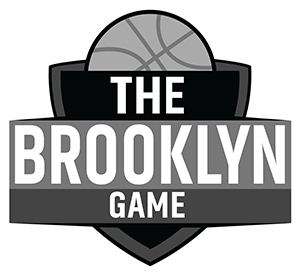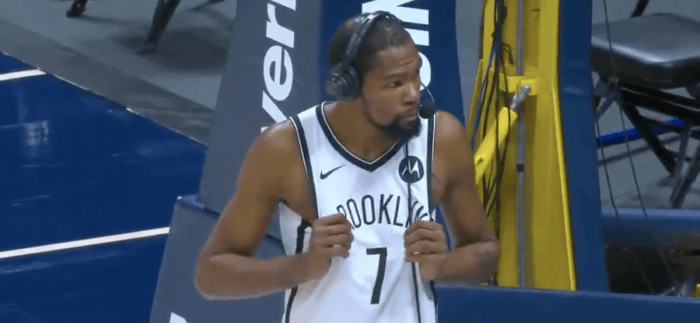A couple of weeks ago, hot on the scent of Rubiomania, I attended the Nets-Timberwolves game with a friend of mine. My friend’s a classically trained violinist (and a brilliant one at that), but not much of a basketball fan. He knows the general rules and tricks, but really we just went to the game to hang out, have a couple of drinks, and listen to the obscenities hurled downwards at the court by the fraternity bros above us.
Near the end of the game, Anthony Morrow completed his three-point explosion by splashing a three-plus-the-foul to cut the Timberwolves lead — once fourteen — to one. After Morrow nailed the free throw, Minnesota took a timeout, replacing 74% free throw shooter Nikola Pekovic with 87% free throw shooter J.J. Barea.
The Nets immediately fouled Barea, sending him to the line, where he was greeted with catcalls, insults about his height, banging chairs and thundersticks alike.
My friend, upon hearing the crowd’s roar at Barea’s free throws, asked me: “why do they do that?”
“What?”
“Yell and scream at the free throw shooter.”
We went back and forth for a bit over the roar. Without taking a stance, I rapped off some platitudes — it’s about getting in the guy’s head, scaring him, making him think about his decision. My friend, a performance artist by design, contended that white noise doesn’t beget performance anxiety — pure silence does, especially for the solo artist. When a performer’s on stage alone, the raucous cheers and applause soothe the nerves. I couldn’t disagree — I know the feeling.
Barea nailed both free throws. After a quick Nets dunk, they were forced to foul again. This time they sent Luke Ridnour to the line, who received identical treatment as Barea: screams, yells, taunts, distractions galore. Like Barea, Ridnour hit both free throws. Ten seconds later, the Timberwolves won the game.
At this point, watching a crowd desperately attempt to make a difference, the only words that came to me were the same eight that can kill sports, the eight Bill Simmons often cites: because that’s the way we’ve always done it. We always scream at the opponent when they (and the game) are on the line. We blast voices, wave arms, smash together plastic blow-up toys, exploit our emotions in any effort to throw off the performer. It’s our way of feeling involved in what’s going on, our little droplet in an ocean of distraction.
But considering the circumstances, does it really work? Noise creates a cushion, one that a player can fall back into. The anxiety of performance loses meaning when all you hear is a sea of nothing in particular. It’s a soft background noise. It’s easy to presume that, as one individual in the crowd, your voice is heard and jarring. It certainly feels that way. But when faced with a crowd, 20,000 disjointed voices all sound alike — and together, they sound like one overlapping breeze.
One study (of which I can only view the abstract, unfortunately; hint-hint, college students with access to these sorts of things) suggests that there’s a certain performance anxiety that results from home-court situations, from playing in front of a supportive crowd. I wonder how much of that is the sudden alertness a player feels when the entire building suddenly shuts up for him, silently pleading for success.
Why hasn’t a team’s fans tried this? Why haven’t Nets fans or emcees, who have all the free room in the world to experiment with weird ideas, attempted silence as their pièce de résistance? Worst-case scenario: the Nets lose a game to what’s most likely a better team anyway. Best-case: they start a revolution.
Cheering & jeering is the safe option. Forcing the shooter to hear his dribble echo throughout the arena? That’s a risk.
My challenge, to whatever base can mobilize and feels like listening to me: at the apex of a contest, with the game hanging in the balance at the free throw line, just stare at the shooter. Don’t say a word. Not a whisper in the arena. Just 40,000 eyes piercing the soul of one man, now wildly aware that everyone is staring at him — and no one is speaking. Throw him off by throwing off expectation altogether. I understand that it’s hard to put together, but with the pull of an understanding arena, it’s not that hard. (Side note: has a team ever tried this? If so, I’ve never heard of it. Please alert me.)
I’m not saying this is an absolute answer, merely an unproven theory. It’s entirely possible that a silent room of 20,000 would feel like an empty gym, allowing the free throw shooter even easier free points. Maybe the silence helps some performers — in this case, the best 450 performers in the world at their craft — concentrate and completely block out their surroundings.
Maybe. But I don’t know that. And neither do you. And that’s why it’s worth a shot.




















